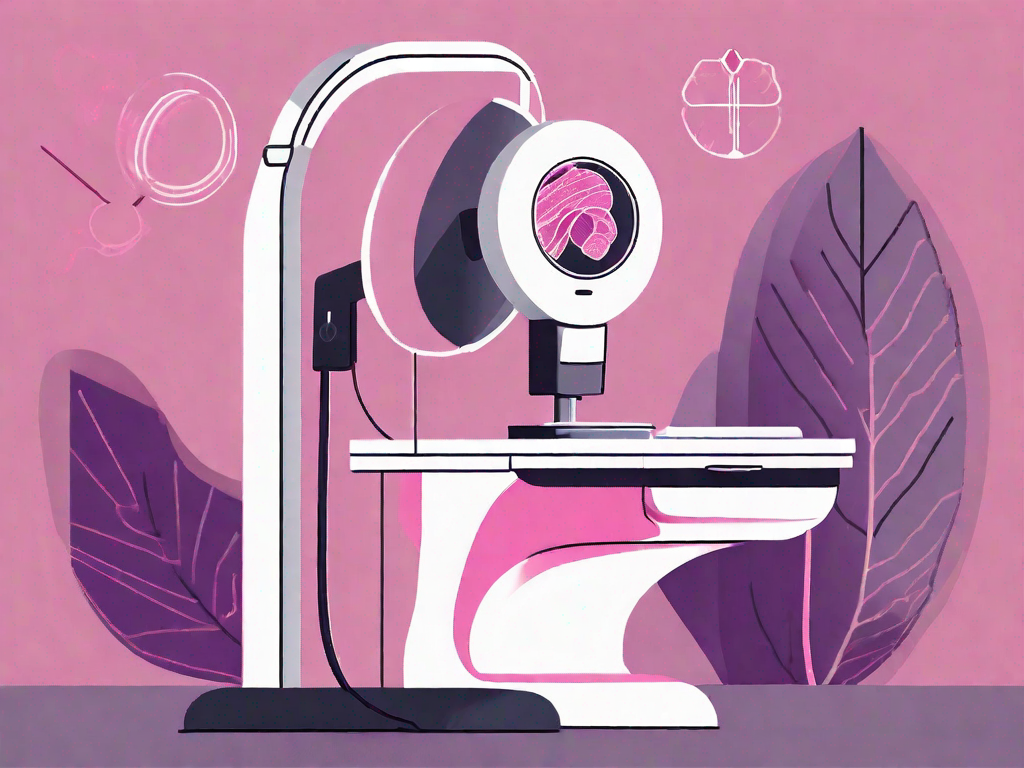This blog post offers an insightful overview of mammography, a crucial tool in early breast cancer detection for both women and men. It explains mammography as a low-dose X-ray technique used to spot tumors or growths. Emphasizing regular screenings for early detection, the post guides on preparing for a mammogram, including avoiding certain products and wearing appropriate clothing. It addresses the process and temporary discomfort during the exam. The post also discusses interpreting results, frequency of screenings based on individual risk factors, and the benefits and limitations of mammography. Alternatives like Digital Breast Tomosynthesis and Breast Ultrasound are mentioned, alongside advice on consulting healthcare providers for personalized breast health care.Breast cancer is one of the most common forms of cancer, affecting both women and men. Early detection plays a crucial role in saving lives, and mammography is a key tool in breast cancer screening. Whether you’re a woman over the age of 40 or have a family history of breast cancer, this guide will provide you with all the information you need to understand and navigate mammography.
What is Mammography?
Mammography is a specialized medical imaging technique that uses low-dose X-rays to examine the breasts for signs of tumors or abnormal growths. It is considered the gold standard in breast cancer detection and has proven to be effective in identifying breast cancers at an early stage, when they are most treatable.
A mammogram typically involves compressing the breast between two plates to obtain clear images. These images are then interpreted by radiologists who specialize in breast imaging.
Why is Mammography Important?
Regular mammography screening is essential because it can detect breast cancer in its early stages, even before symptoms appear. Early detection allows for less invasive treatment options and significantly increases the chances of successful outcomes. Mammography can detect small lumps that may not be felt during a physical exam and can identify abnormalities in breast tissue that may need further investigation. It is a proactive step towards prioritizing your breast health and taking control of your well-being.
Preparing for a Mammography Appointment
Preparing for a mammography appointment is simple but important to ensure accurate results:
- Inform your healthcare provider of any breast changes or symptoms you may be experiencing.
- Avoid using deodorants, antiperspirants, powders, or lotions on your breasts or underarms prior to the exam, as they can interfere with the images.
- Wear comfortable clothing that allows easy access to your breasts, as you may be asked to undress from the waist up and wear a gown during the procedure.
- If you have had previous mammograms, bring along your previous images or inform the facility where they are stored to ensure accurate comparisons.
What to Expect During a Mammography Exam
During a mammography exam, you will be positioned in front of the mammography machine. Your breasts will be gently compressed between two plates to obtain high-quality images. While this compression can cause temporary discomfort, it is usually brief and well-tolerated.
The technologist will work diligently to ensure your comfort and will guide you through each step of the procedure. Clear communication is key, so feel free to ask any questions or voice any concerns you may have.
Is Mammography Uncomfortable or Painful?
While mammography may cause temporary discomfort or pressure, it is not typically painful. The compression applied to the breasts is necessary to obtain clear images and is well worth the few moments of potential unease. Remember, the discomfort is minimal compared to the benefits of early detection and potential lifesaving outcomes.
Understanding the Results of a Mammography
Following your mammography, a radiologist will carefully analyze the images and provide a detailed report to your healthcare provider. The report will indicate whether further tests or follow-ups are recommended.
It is important to remember that an abnormal result doesn’t necessarily mean you have breast cancer. Many findings may require further investigation or additional imaging to determine their nature. Your healthcare provider will guide you through any necessary next steps.
How Often Should You Get a Mammography?
The frequency of mammography screenings depends on your age, risk factors, and individual circumstances. As a general guideline:
- Women aged 40-49 are recommended to discuss mammography screening with their healthcare provider and make an informed decision together.
- Women aged 50-74 are generally advised to have mammograms every two years.
- For women with higher risk factors, such as a family history of breast cancer or genetic mutations, more frequent screening and other diagnostic tests may be necessary.
It is crucial to consult your healthcare provider to develop a personalized screening plan based on your unique situation.
Benefits and Limitations of Mammography
Mammography offers numerous benefits, including:
- Early detection of breast cancer, leading to more treatment options and improved survival rates.
- Identification of tumors at a smaller size, making them easier to treat.
- Reduced need for invasive surgeries or aggressive treatment approaches.
It is worth noting that mammography does have limitations. It may miss some cancers or detect abnormalities that are not cancerous. Additionally, false positives can lead to unnecessary anxiety and additional testing.
By understanding the benefits and limitations, you are empowered to make informed decisions about your breast health and consider other screening options if necessary.
Risks of Mammography and How to Minimize Them
Mammography is generally considered a safe and effective screening tool for breast cancer, and the benefits of early cancer detection often outweigh the potential risks. However, like any medical procedure, mammography is not entirely risk-free. Here are some of the potential risks associated with mammography:
- Radiation Exposure: Mammograms use a low dose of ionizing radiation to create images of the breast tissue. While the radiation exposure is minimal, repeated mammograms over time can contribute to cumulative radiation exposure. The risk of harm from this radiation is very low and is outweighed by the benefits of early cancer detection. Modern mammography machines are designed to minimize radiation exposure.
- False Positives: Mammograms can sometimes produce false-positive results, indicating the presence of an abnormality when there is no cancer. False positives can occur for various reasons, including breast density. Dense breast tissue can make it more challenging to interpret mammogram images because both cancerous and non-cancerous tissue appear white on the mammogram. This similarity in appearance can lead to false-positive findings, as radiologists may have difficulty distinguishing between normal breast tissue and potential abnormalities.
- False Negatives: Conversely, mammograms can also produce false-negative results, failing to detect cancer that is present. This can lead to a delay in diagnosis and treatment.
- Overdiagnosis: Mammography can detect very small or slow-growing breast cancers that may not necessarily pose a significant health threat. Overdiagnosis can lead to overtreatment, including surgery, radiation therapy, and chemotherapy, which may not be needed.
- Anxiety: Waiting for mammogram results and the possibility of abnormal findings can cause anxiety and emotional distress for some individuals.
It’s important to note that healthcare providers carefully weigh the benefits and risks of mammography when recommending it to patients. The potential risks associated with mammography are generally considered minimal compared to the benefits of early breast cancer detection, which can lead to more effective treatment and improved survival rates. Women should discuss their individual risk factors and concerns with their healthcare provider to make informed decisions about breast cancer screening. Additionally, advances in mammography technology and ongoing research aim to reduce the risks and improve the accuracy of breast cancer screening.
Alternative Breast Cancer Screening Options
While mammography remains the standard for breast cancer screening, there are alternative options to consider, especially in individuals with dense breasts. Some of these options include:
- Digital Breast Tomosynthesis (DBT or 3D Mammography): This technology takes multiple X-ray images of the breast from different angles and creates a 3D reconstruction of the breast tissue. DBT has been shown to improve cancer detection and reduce false positives in women with dense breasts compared to traditional digital mammography.
- Breast Ultrasound: Breast ultrasound is often used as a supplementary imaging tool for women with dense breasts or when there are suspicious findings on a mammogram. It can provide additional information about breast abnormalities.
- Breast MRI (Magnetic Resonance Imaging): Breast MRI is a highly sensitive imaging modality that can be used in cases where there is a high risk of breast cancer or when other imaging results are inconclusive. It is not typically used as a routine screening tool for the general population due to its cost and complexity.
Questions to Ask Your Doctor About Mammography
When it comes to your breast health, no question is too trivial. To make the most of your mammography appointment, consider asking your healthcare provider:
- Why is a mammogram recommended for me?
- Are there any risk factors that make me a higher priority for more frequent screenings?
- Should I schedule the mammogram at a specific time during my menstrual cycle?
- Is it OK to have a mammogram when I am breast-feeding?
- What should I do if I have dense breast tissue? How do I know if I have dense breast tissue?
- How do I prepare for my mammography appointment?
- What can I expect during the mammography procedure?
- How long will it take to receive the results of the mammogram?
- What happens if the mammography results are abnormal?
The answers to these questions will help you feel more confident and comfortable as you prioritize your breast health.
Your Journey Towards Breast Health
Understanding mammography and the role it plays in breast cancer screening is an essential step on your journey towards breast health. By staying informed, scheduling regular screenings, and discussing any concerns with your healthcare provider, you are taking control of your well-being and increasing the likelihood of early detection.
Remember, you are not alone on this journey. Reach out to your support system, ask questions, and encourage others to prioritize their breast health. Together, we can create a world with earlier breast cancer diagnoses and more survivors.






